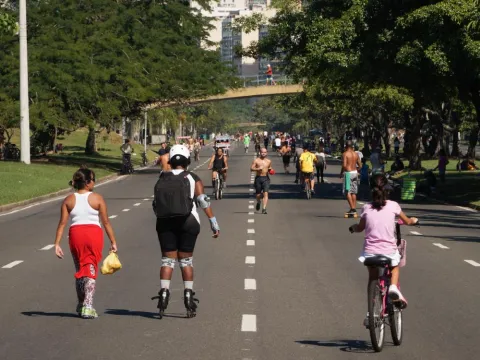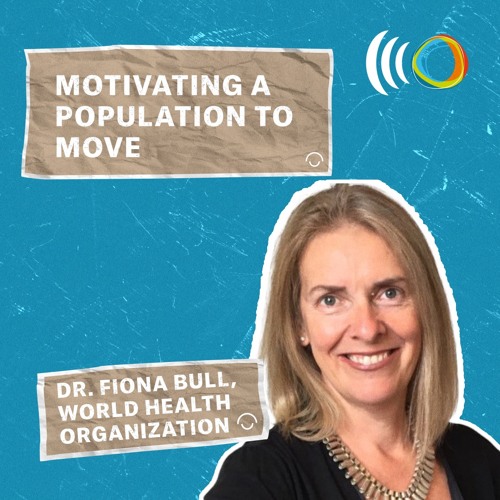Physical inactivity report: a wake-up call ahead of 2025 High-Level Meeting on NCDs
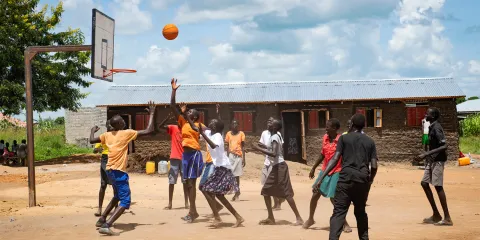
More and more adults worldwide are not doing enough physical activity, which in turn will increase the number of people living with noncommunicable diseases (NCDs), says a new report.
Nearly a third (31%) of adults, roughly 1.8 billion people, did not meet the recommended levels of physical activity in 2022, an increase of about 5% between 2010 and 2022. Physical inactivity puts adults at greater risk of cardiovascular diseases such as heart attacks and strokes, type 2 diabetes, dementia and cancers such as breast and colon, says the report, Global levels of physical inactivity in adults: Off track for 2030.
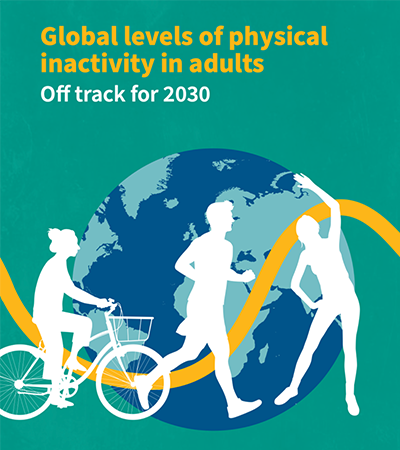
Governments must act
With the next UN High-Level Meeting on NCDs (UNHLM) scheduled for September 2025, the report can act as a wake-up call, says NCD Alliance Policy and Advocacy Director Alison Cox.
“This report provides specific data that can be used to discuss with governments – giving credit where it is due, but also holding others to account and asking them to take action to help meet the target. The next UNHLM provides us with a deadline for governments to take action to do more and do better – have national plans that are well funded, implemented, monitored and reported on.”
The new results are not surprising. The Global status report on physical activity 2022 revealed that putting in place the WHO Global Action Plan on Physical Activity (GAPPA) had “been slow and uneven, resulting in little progress towards increasing population levels of physical activity… and a reversal of progress in several key areas.” It predicted that if current trends continued, almost 500 million new cases of preventable NCDs would occur between 2020 and 2030. Treating them would cost just over US$300 billion or around US$27 billion a year.
The new study was undertaken by researchers from WHO together with academic colleagues and published in The Lancet Global Health journal. It does find some cause for optimism. Data indicate a declining trend in physical inactivity levels in just under half of countries. In addition, 22 countries were identified as on track.
Region-wise, only the WHO African Region is on track to meet the 2030 target — a 15% relative reduction in physical inactivity by 2030.
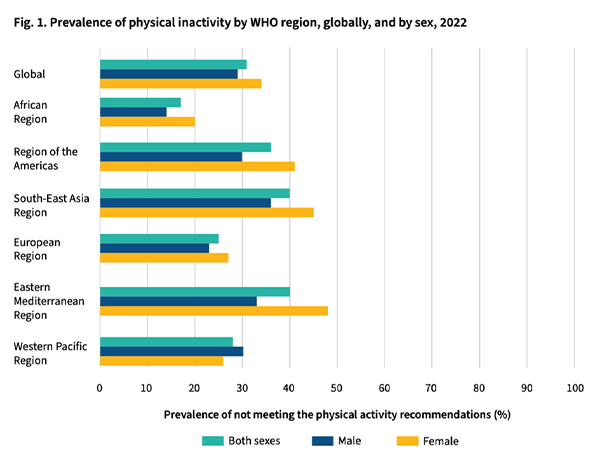
Recommendations in the new report include:
- Strengthen cross-government policies and actions to create enabling environments and promote physical activity;
- Provide sufficient resources to implement policies, which must be monitored and reported on;
- Build a stronger workforce to act on physical activity policies, including health and social care providers, sport and exercise professionals, and urban and transport planners;
- Focus on women and older adults. Both groups have higher levels of physical inactivity than do men and younger adults, respectively.
“Promoting physical activity goes beyond promoting individual lifestyle choice — it will require a whole-of-society approach and creating environments that make it easier and safer for everyone to be more active in ways they enjoy to reap the many health benefits of regular physical activity,” said Dr Fiona Bull, Head of the WHO Unit for Physical Activity, in a press release.
